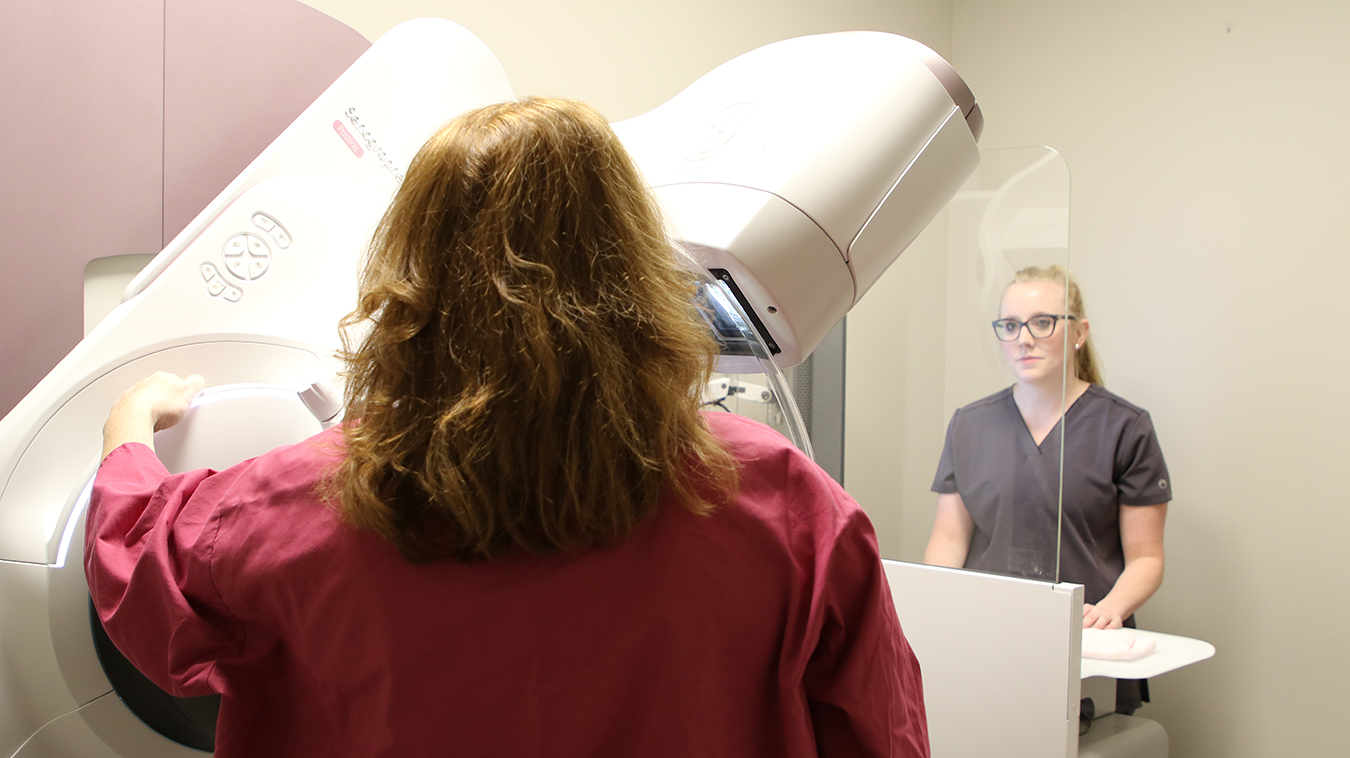TOLL FREE:
1-866-611-2665

Home WHAT ARE DIGITAL MAMMOGRAPHY AND BREAST TOMOSYNTHESIS?
Traditionally, mammography produced images of your breast tissue on film. Today, this technique has been largely replaced with digital mammography in most parts of Canada.
Digital mammography uses the same procedure as the traditional mammography whereby the breast is compressed to spread the tissue apart for an accurate image taken by low-dose X-rays. The difference is that instead of processing the images on screen-film, digital mammography uses a computer to capture a digital image (mammogram) of the breast tissue. This method is much more accurate, much faster, and makes it easier to share the images between health care practitioners and save them on your electronic health record.
Digital breast tomosynthesis is often referred to as 3D-mammography or just tomosynthesis. Like digital mammography, it uses low-dose X-rays to capture images of the breast tissue. However, with digital breast tomosynthesis the X-ray machine rotates in an arc to capture multiple images of the tissue from many different angles, which are then processed to create a three-dimensional (3D) image of the breast. This produces a more detailed image, since a standard mammography takes images only from the front and side.
According to Alberta guidelines, mammography is the recommended method of breast cancer screening for the average risk population because it reduces breast cancer mortality. However, sometimes the compression can cause overlapping in the breast tissue which decreases the accuracy of the image. Similarly, if a patient has very dense breasts the sensitivity of mammography is decreased.
Digital breast tomosynthesis, on the other hand, may be especially useful for higher risk patients. For example, over 40% of women in Canada, age 40 and over, have dense breast tissue which is a risk factor for breast cancer. Specifically, smaller tumours are harder to see among dense breast tissue in digital mammography. Evidence suggests that digital breast tomosynthesis is better able to detect smaller breast cancers with more accuracy and fewer false-positives.
For more information on dense breasts, read our articles: What are Dense Breasts? and What are the Pros and Cons of Breast Cancer Screening.
As a patient, the most important thing to do is thoroughly discuss your options with your health care practitioner. At Mayfair, all of our screening mammography exams are performed on equipment that has digital breast tomosynthesis technology.
Plus, in 2018, Mayfair Diagnostics was the first in Western Canada to install the leading-edge Senographe Pristina Dueta mammography system in several of our clinics. Now we have 11 mammography clinics with this new system, which uses DBT.
Pristina also helps make mammograms more comfortable for patients through its ergonomic design and a special feature called patient-assisted compression. After the breast is properly positioned by a technologist and initial compression is set, you can choose to use a handheld wireless remote control to adjust the level of compression to what’s comfortable for you, under the guidance of a technologist.
Some patients find mammograms uncomfortable, due to the pressure, and are therefore less likely to go for regular breast cancer screening with mammography. Patient-assisted compression allows the patient to reduce the pressure of the exam, while still maintaining excellent diagnostic quality. Giving patients some measure of control during their exam can help decrease their anxiety and increase their willingness to return.
Breast imaging exams are listed on our General Requisition, under Breast Imaging, your physician would simply check the appropriate box.
Your doctor can also check off the “Complete Breast Assessment” check box and we will determine the appropriate breast exams for you to have based on your history and breast density. When this box is selected, you may also receive a breast ultrasound when you have your mammogram. A number of studies indicate that ultrasound is one of the most promising adjunct screening modalities because of its benefit for dense breasts and its low cost and availability.
Mayfair offers DBT at all 14 of our mammography locations and patient-assisted compression at 13 of our clinics. Coventry Hills has a mammography system that uses DBT but doesn’t offer patient-assisted compression.
For a list of our mammography clinics, please visit our mammography services page.
REFERENCES
Alberta Breast Cancer Screening Clinical Practice Guideline Committee (2022) “Alberta Breast Cancer Screening Clinical Practice Guideline: 2022 Update.” www.screeningforlife.ca. Accessed April 11, 2022.
Canadian Agency for Drugs and Technologies in Health (2015) “Tomosynthesis (3D Mammography) for Breast Cancer Screening.” Issues in Emerging Health Technologies, May, 135. Accessed April 11, 2022.
Canadian Cancer Society (2022) “Screening for breast cancer.” www.cancer.ca. Accessed April 11, 2022.
Canadian Task Force on Preventative Health Care. (2018) “Breast Cancer Screening for Women Not at Increased Risk – Updated Task Force Recommendations for Women.” www.canadiantaskforce.ca. Accessed April 11, 2022.
Healthwise Staff (2022) “Mammogram: Test Overview.” www.myhealth.alberta.ca. Accessed April 11, 2022.
Johnson, K. (2021) “Interval Breast Cancer Rates and Tumor Characteristics in the Prospective Population-based Malmo Breast Tomosynthesis Screening Trial.” Radiology, Apr., vol. 299 (3). Accessed April 11, 2022.
Lowry, K. P., et al. (2020) “Screening Performance of Digital Breast Tomosynthesis vs Digital Mammography in Community Practice by Patient Age, Screening Round, and Breast Density.” JAMA Network Open. 2020;3(7): e2011792. Accessed April 11, 2022.
Our Refresh newsletter delivers the latest medical news, expert insights, and practical tips straight to your inbox, empowering you with knowledge to enhance patient care and stay informed.
By subscribing to our newsletter you understand and accept that we may share your information with vendors or other third parties who perform services on our behalf. The personal information collected may be stored, processed, and transferred to a country or region outside of Quebec.
Please read our privacy policy for more details.